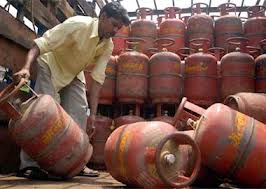New Delhi, Jun 9: A record rise in COVID-19 cases in India for the seventh consecutive day has pushed the tally to over 2.6 lakh on Tuesday, with the daily nationwide spike in coronavirus cases inching close to 10,000.
The rise in cases comes at a time when the country has stepped out of a 75-day coronavirus lockdown with malls, religious places and offices opening in several parts of the country under strict conditions.
Since the onset of June, the country has also been witnessing over 200 COVID-19 fatalities each day that has taken the country's death toll to 7,466.
India is the fifth worst-hit nation by the COVID-19 pandemic after the US, Brazil, Russia and the UK, according to the Johns Hopkins University data.
Several states like Haryana, Jammu and Kashmir, Assam, Haryana, Karnataka, Chhattisgarh and Tripura among others have been showing a spurt in cases.
A total 266 new COVID-19 fatalities and 9,987 cases have been reported in the last 24 hours till Tuesday 8 am, according to the Union Health Ministry data.
The country has registered over 9,000 coronavirus infection cases for the sixth day in a row taking the country tally to 2,66,598.
The number of active novel coronavirus cases stands at 1,29,917, while 1,29,214 people have recovered and one patient has migrated, according to the Health Ministry data updated till 8 am.
"Thus, 48.47 per cent patients have recovered so far," a ministry official said.
According to the ICMR, a total of 49,16,116 samples have been tested as on 9 am, Tuesday, with 1,41,682 samples been tested in the last 24 hours.
Out of the total 7,466 fatalities reported till Tuesday 8 am, Maharashtra tops the tally with 3,169 deaths followed by Gujarat with 1,280 deaths, Delhi with 874, Madhya Pradesh with 414, West Bengal with 405, Tamil Nadu with 286, Uttar Pradesh with 283, Rajasthan with 246 and Telangana with 137 deaths.
The death toll reached 75 in Andhra Pradesh, 64 in Karnataka and 53 in Punjab.
Jammu and Kashmir has reported 45 fatalities due to the coronavirus disease, while 39 deaths have been reported from Haryana, 31 from Bihar, 16 from Kerala, 13 from Uttarakhand, nine from Odisha and seven from Jharkhand.
Himachal Pradesh and Chandigarh have registered five COVID-19 fatalities each and Assam and Chhattisgarh have recorded four deaths each so far.
Meghalaya and Ladakh have reported one COVID-19 fatality each, according to ministry data.
More than 70 per cent of the deaths are due to comorbidities, the ministry's website stated
The highest number of confirmed cases in the country are from Maharashtra at 88,528 followed by Tamil Nadu at 33,229, Delhi at 29,943, Gujarat at 20,545, Uttar Pradesh at 10,947, Rajasthan at 10,763 and Madhya Pradesh at 9,638, according to the Health Ministry's data updated in the morning.
The number of COVID-19 cases has climbed to 8,613 in West Bengal, 5,760 in Karnataka, 5,202 in Bihar and 4,854 in Haryana.
It has risen to 4,851 in Andhra Pradesh, 4,285 in Jammu and Kashmir, 3,650 in Telangana and 2,994 in Odisha.
Punjab has reported 2,663 novel coronavirus cases so far, while Assam has 2,776 cases. A total of 2,005 people have been infected by the virus in Kerala and 1,411 in Uttarakhand.
Jharkhand has registered 1,256 cases, while 1,160 cases have been reported from Chhattisgarh, 838 from Tripura, 421 from Himachal Pradesh, 330 from Goa and 317 from Chandigarh.
Manipur has 272 cases, Puducherry has 127 and Nagaland has reported 123 cases till now.
Ladakh has 103 COVID-19 cases, Arunachal Pradesh has 51, Mizoram has 42, Meghalaya 36 while Andaman and Nicobar Islands has registered 33 infections so far.
Dadar and Nagar Haveli has 22 cases, while Sikkim has reported seven cases till now.
The ministry's website said that 8,803 cases are being reassigned to states and "our figures are being reconciled with the ICMR".
State-wise distribution is subject to further verification and reconciliation, it said.








Comments
Add new comment